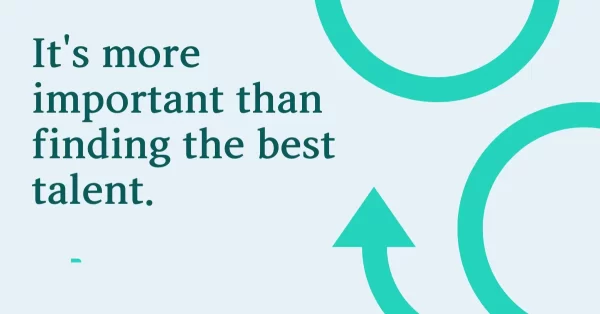When one-third of employees are in personal crisis, the organization is in crisis!
We all know the critical relationship between employee well-being and organizational performance.
When a significant proportion of an organization’s employees are facing personal, financial, or mental health challenges, it can have a profound impact on their productivity, engagement, and overall performance. Employees who are struggling with these issues may be distracted, emotionally drained, or less motivated, which can lead to decreased efficiency, quality, and customer satisfaction.
Moreover, the impact of employee crisis can ripple through the organization and affect other employees, creating a toxic work environment that can lead to increased absenteeism, turnover, and decreased morale. This can ultimately impact the bottom line of the organization in terms of lost productivity, increased recruitment and training costs, and lower revenue.
Additionally, if the organization does not take steps to address the crisis situation, it can lead to reputational damage, decreased employee loyalty, and decreased stakeholder confidence. This can further harm the organization’s ability to attract and retain talented employees, as well as its overall competitiveness in the market.
Therefore, it is important for organizations to be proactive in addressing employee crisis situations and provide support, resources, and accommodations to help employees navigate through difficult times. This can include offering mental health resources, financial assistance, flexible work arrangements, and other support mechanisms that can help employees manage their challenges and improve their overall well-being.
Though the statement “when one-third of employees are in crisis, the organization is in crisis” is a hypothetical statement, but I am sure that highlights the critical link between employee well-being and organizational performance. By prioritizing employee support and addressing crisis situations promptly, organizations can improve employee engagement, productivity, and overall performance, while also enhancing their reputation and stakeholder confidence.

Starting a human resources consultancy business that focuses on helping organizations identify and address employee crises and mental health challenges
If you are interested in starting a human resources consultancy business that focuses on helping organizations identify and address employee crises and mental health challenges, here are some steps you can take:
Conduct market research: Conducting market research can help you identify the need for this type of service and understand the competitive landscape. This can involve conducting surveys and focus groups with potential clients, researching industry trends and best practices, and analyzing competitor offerings.
Develop a service offering: Based on your research, develop a service offering that addresses the specific needs and challenges of your target market. This could include assessments, training and development programs, crisis management plans, and ongoing support and consultation.
How this product/service will work?
Assessment and Identification: The consultancy business will provide assessments to identify employees who are experiencing personal crises, such as mental health challenges, family issues, financial problems, or other personal difficulties. These assessments may involve psychometric tests, interviews, or surveys.
Productivity Evaluation: The consultancy business will evaluate the impact of personal crises on employee productivity and assess how it is affecting organizational performance. This may involve comparing the productivity levels of employees experiencing personal crises to those who are not, analyzing absenteeism and turnover rates, and assessing the impact on team dynamics and morale.
Intervention and Support: The consultancy business will develop interventions and support strategies to help employees in personal crisis manage their challenges and improve their productivity. This may involve providing counseling and mental health support, financial coaching, family support services, and other interventions as needed.
Ongoing Monitoring and Evaluation: The consultancy business will provide ongoing monitoring and evaluation to track the progress of employees in personal crisis and assess the effectiveness of the interventions and support strategies. This may involve regular check-ins, follow-up assessments, and data analysis.
Overall, this service/product model provides a comprehensive approach to addressing personal crises in the workplace and improving organizational productivity. By identifying and addressing the challenges that employees are facing, the consultancy business can help organizations create a supportive and sustainable workplace environment that promotes employee well-being and business success.
3. Build a team: Assemble a team of qualified mental health professionals, HR experts, and consultants who have experience working with organizations to address employee crises and mental health challenges.
4. Establish partnerships: Establish partnerships with other organizations, such as mental health clinics, employee assistance programs, and wellness providers, to expand your service offering and provide comprehensive support to your clients.
4. Develop marketing and outreach strategies: Develop marketing and outreach strategies to promote your services to potential clients. This could include creating a website, developing marketing materials, attending industry conferences, and leveraging social media and other online platforms.
5. Provide ongoing support: Provide ongoing support and consultation to your clients to ensure that they are able to effectively address employee crises and mental health challenges over the long term.
Overall, starting a human resources consultancy business that focuses on employee crises and mental health challenges requires a deep understanding of the needs and challenges of your target market.

Why do I think this service/product has all the makings to succeed?
“Mental health in the workplace is an essential part of overall employee health and well-being, which is essential to organizational success.” – American Psychiatric Association
This quote emphasizes the link between mental health and organizational success, and the importance of prioritizing employee well-being in the workplace. By promoting mental health in the workplace, organizations can improve employee satisfaction and engagement, which can lead to increased productivity and success.
The above statement emphasizes the critical importance of employee well-being to the long-term success and sustainability of an organization.
There are several reasons why this is the case:
Employee engagement: When employees are in crisis, they may be distracted, emotionally drained, or less motivated, which can lead to decreased engagement and productivity. This can ultimately impact the organization’s ability to achieve its business goals and objectives.
Employee retention: If an organization does not provide support to employees in crisis, they may become disengaged or leave the organization altogether. This can lead to increased recruitment and training costs, decreased morale, and a negative impact on the organization’s reputation.
Reputation: An organization’s reputation can be significantly impacted by how it handles employee crisis situations. If an organization is seen as unsupportive or uncaring towards employees in crisis, it can lead to negative publicity, decreased customer loyalty, and decreased stakeholder confidence.
Legal and financial risks: Organizations may face legal and financial risks if they do not provide support to employees in crisis. For example, if an employee’s crisis is related to a disability or mental health condition, the organization may be required by law to provide reasonable accommodations to help the employee manage their condition.
Ethical responsibility: As a responsible employer, it is an organization’s ethical duty to support its employees during difficult times. This includes providing access to resources and accommodations that can help employees manage their challenges and improve their overall well-being.
In summary, an organization’s success is closely tied to the well-being of its employees. By prioritizing employee support and addressing crisis situations promptly, organizations can improve employee engagement, retention, and overall performance, while also enhancing their reputation and reducing legal and financial risks.
In case you are interested to implement it in your organization (Not as a business)
Process of Identifying individual employee crises
You are an HR expert, and you surely know much better than me, the descriptions below are common and often practiced.
This can be challenging, but there are several strategies that organizations can use to help identify employees who may be in crisis:
Encourage open communication: Encouraging open and regular communication between employees and their managers or HR representatives can help identify when an employee is experiencing a crisis. Regular check-ins, performance evaluations, and feedback sessions can help managers stay informed about their employees’ well-being and identify any changes in behavior or performance.
Train managers and HR representatives: Providing training to managers and HR representatives on how to identify and address employee crises can help improve the organization’s ability to identify employees who may be in crisis. This can include training on how to recognize signs of distress, how to approach employees who may be in crisis, and how to connect employees with appropriate resources and support.
Provide anonymous feedback channels: Some employees may be hesitant to share their personal struggles with their managers or HR representatives. Providing anonymous feedback channels such as suggestion boxes, online feedback forms, or confidential hotlines can help employees feel more comfortable sharing their concerns.
Conduct regular employee surveys: Conducting regular employee surveys can help organizations identify areas of concern and assess employee satisfaction and well-being. Surveys can also provide an opportunity for employees to share feedback and concerns anonymously.
Monitor social media: Monitoring employees’ social media accounts can help organizations identify when an employee is in crisis. However, it is important to do so in a way that respects employee privacy and does not violate any laws or ethical standards.
Overall, it is important for organizations to create a supportive and open culture that encourages employees to speak up about their personal struggles and to provide resources and support to help employees manage their challenges and improve their overall well-being.
There are several psychometric tests that organizations can use to help identify employees who may be in crisis or struggling with mental health challenges. Some of the commonly used tests include:
The Patient Health Questionnaire-9 (PHQ-9): The PHQ-9 is a self-administered questionnaire that assesses symptoms of depression. It can be used to screen for depression, monitor treatment progress, and evaluate outcomes.
The Generalized Anxiety Disorder-7 (GAD-7): The GAD-7 is a self-administered questionnaire that assesses symptoms of anxiety. It can be used to screen for anxiety disorders, monitor treatment progress, and evaluate outcomes.
The Work-related Quality of Life Scale (WRQoL): The WRQoL is a self-administered questionnaire that assesses work-related quality of life. It can be used to assess the impact of work on an employee’s physical and mental health, and identify areas of concern.
The Maslach Burnout Inventory (MBI): The MBI is a self-administered questionnaire that assesses burnout in the workplace. It can be used to identify employees who may be at risk of burnout, and to develop interventions to prevent burnout and improve employee well-being.
The Workplace Stress Scale (WSS): The WSS is a self-administered questionnaire that assesses workplace stress. It can be used to identify sources of stress in the workplace, and to develop interventions to manage and prevent workplace stress.
It is important to note that these tests should be administered by a qualified mental health professional, and should be used in conjunction with other assessment tools and clinical judgment. Additionally, it is important to respect employee privacy and confidentiality when administering these tests, and to ensure that employees are informed about the purpose and use of the tests.
Conclusion
The opportunity and prospects for a human resources consultancy business that focuses on addressing employee crises and mental health challenges are significant. With the growing recognition of the importance of mental health and wellness in the workplace, organizations are increasingly seeking support and guidance in this area. By providing assessments, training and development programs, crisis management plans, and ongoing support and consultation, a consultancy business can help organizations create a supportive and sustainable workplace environment that promotes employee well-being and business success. With the right team, service offering, and marketing strategies, this innovative business idea has the potential to thrive and make a meaningful impact on the lives of employees and the success of organizations.




